Review: Extreme Calculation Training
In order to keep our chess brains sharp, we need to practice a wide variety of calculation exercises. Although many are looking for a way to become titled players without doing much effort, the only true path to reach master-level strength involves solving endless exercises. DAVIDE NASTASIO takes a look at the latest work by Robert Ris, which includes exercises that clearly mimic the positions we can find in tournament games. The video series takes us into the depth of calculation, showing once and again why we must not stop at the surface, but dig deep under!
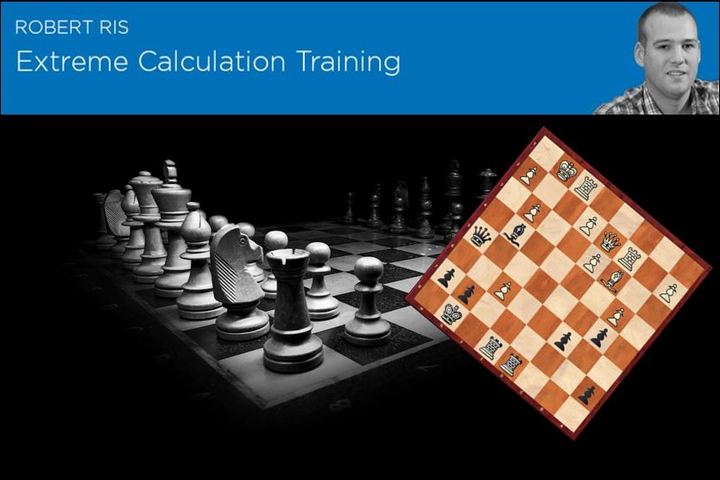
When depth matters the most
While some general positions — with the usual tactical and endgame themes — must be common knowledge for every player, after a certain level it becomes rather useless to keep training them over and over. They do not help us progress anymore.
Many of us don't have the money or the time to hire a coach, who can focus our training with positions specially selected for us. What we need is a structured method to improve — this can only be achieved by getting a teacher that is available when we have some spare time. Obviously, such a teacher is impossible to find. Instead, what we can find is a video series with a theoretical section which discusses what we need to know about calculation, and then a practical section based on training exercises which help us focus our time-limited resources to obtain the best we can.
Ris begins by summarising the teachings from the previous series:
1. The search for candidate moves through forcing moves, checks and captures
2. Creating threats
3. Methods of elimination: how to make a decision, where to stop calculating a line, focusing on the correct line to calculate
4. Imagination in chess
In this new series, Ris is going to elaborate on the above-mentioned topics and will add some topics like calculation in defence, quiet moves, backward moves and some training tips on visualisation. Then a comparative method to use during analysis to determine the best move. And finally, of course, a section on mating patterns.
The theoretical section in which Ris explains and elaborates on these important topics is about two hours long. Yes, two hours of theoretical training in order to create a thinking method we can use during our tournament games.
After that, Ris delves into the interactive training exercises. There are a total of 50 examples, where the viewer can test his/her understanding.
Ris says he has chosen the examples based on his practice as a coach while keeping in mind his students, whose range goes from 1300 to 2400. The goal, however, is not about the rating, but about improving our calculation skills in a structured way, under the guidance of an expert teacher.
I found the video series important for reinforcing concepts we take for granted, but which are not. For example, Ris shows in the first video a position from one of his games. He is White here:
How to evaluate a position?
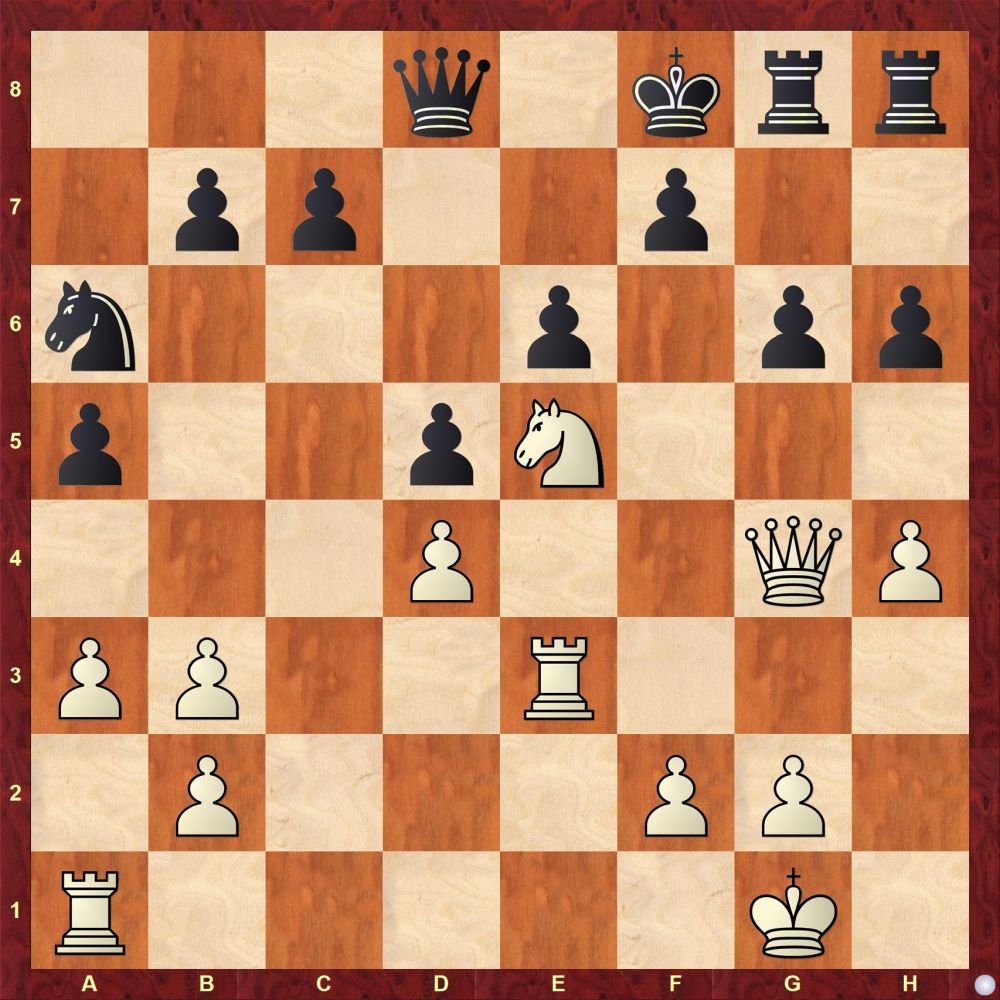
Immediately, without even being aware, he gave the pawn count, showing his thought process, and at a glance checked for the material balance.
Then he reviewed the activity of the pieces. We can also see a contrast in this position: White has three active pieces — ♕g4, ♖e3 and ♘e5 — while Black has three pieces on the back rank, plus the two rooks are blocked and out of the game (never forget that the rooks need open files!). And we have not even mentioned the knight on a6, which seems to be out of the game.
The most vital part of the video is to see how Ris thinks, what he calculates and what he discards — how deep he calculates.
In chess, there are many misleading quotes. One is about how many moves a master sees. Of course, there is a big debate about who said it, but someone declared: "Only one move, the best one". If one has analysed enough games from past champions, like Capablanca, Alekhine, or Bronstein, it becomes clear that in order to prevail against strong opponents it is necessary to calculate at least 4-5 moves ahead. Especially for some combinations to come alive, it would have been impossible to win without precise calculation.
I even began to suspect — and we would need more research on the topic — that the difference in rating between players is just based on visualisation of the lines and the ability to keep them in memory with relative evaluations.
The point I'm trying to make is that Ris proves my hypothesis in the first video, showing that for a simple combination he went at least four moves deep and over a dozen of lines wide (sometimes going deep one move, and discarding it, and sometimes going 2-3 moves ahead before discarding them).
This brings up another problem: how fast one can calculate. This might also be an important factor. In the part of the video where Ris explained his calculations, it took him more than eight minutes, while in the game it might have taken him longer, maybe 10-15 minutes. This proves that long time controls are surely needed for amateurs, but also for professionals who are trained to calculate if we want to see brilliant games.
Now, returning to the diagram above, we come to an interesting experiment.

I used an engine on a weak notebook and it reached depth 36 (18 moves) after about 40 seconds. The move ♖f3, which Ris discarded, was given an evaluation of +2.5 in White's favour. I waited 4-5 minutes until it reached a depth of 40 (but again I don't have good hardware), and still, the move was ♖f3. Instead, the move played by Ris in the game, ♘xf7, immediately is given as equal — or 0.00 — at a depth of 38.
A few moves later, Black missed the key move to defend and equalise. I guess he didn't study Tiviakov's ChessBase DVD on the Art of defence.
However, the central part of the first video is how Ris outlines at which point one should not stop calculating. Yes, often we stop too early, leading to an incorrect evaluation.
I would also like to point out Ris' frankness. He showed his analyses for over twelve minutes and admitted he missed one defensive move Black had, which equalised. As we can see, he cares more about teaching and passing the correct information than coddling his own ego, as some chess players do. The point is quite important because in my games I also have difficulties calculating all the possible (e.g.) queen moves — in Ris' case we see it can happen to a titled player too.
Another important point shown in Ris' analysis is our human bias, which often does not help us when we need to find the best defence for our opponent's plan. I believe it happens to everyone just like it happened to Ris: we cover 6-7 different lines, but our opponent comes out with a critical move we totally missed.
Notice Ris gives a wealth of material one can use for coaching. Since there are different students at different levels, one can use some positions Ris analysed as exercises, like the following one:
A simple checkmate
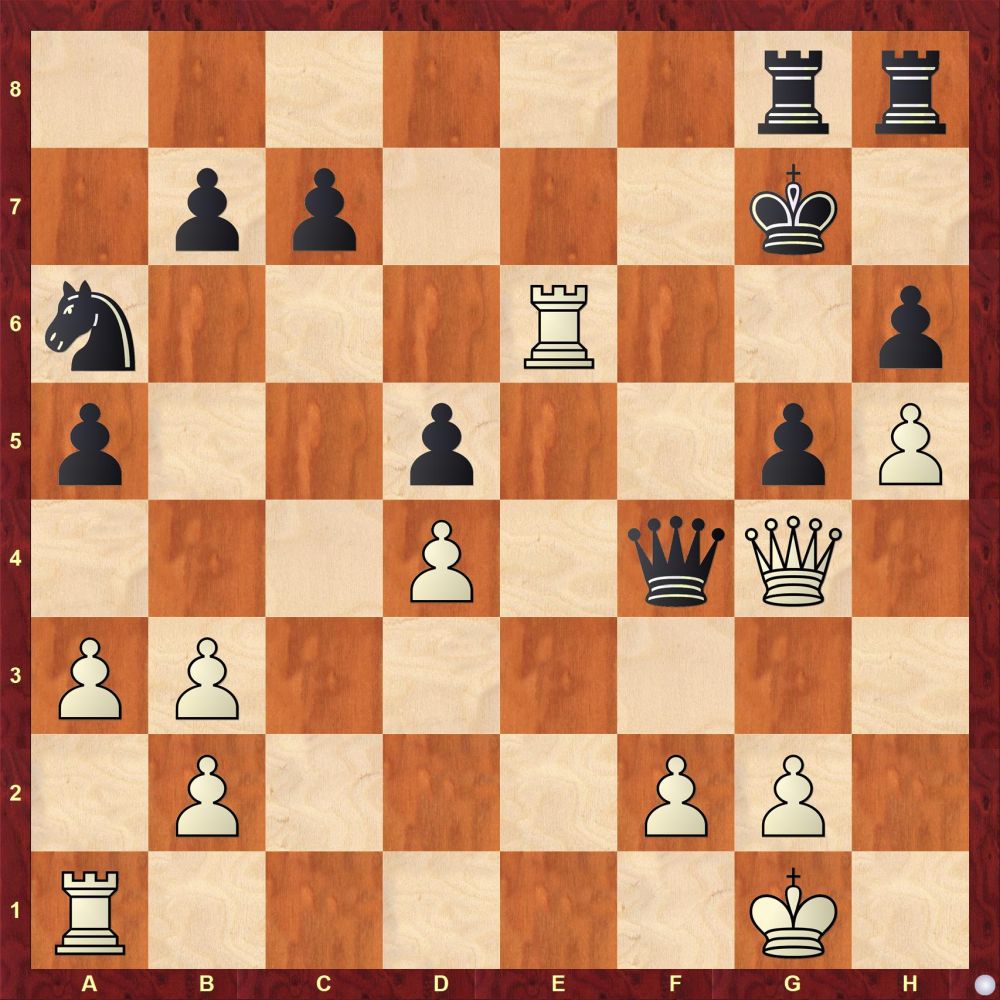
White has a simple checkmate in a few moves.
Another feature of the theoretical section I found interesting was when Ris covers the mistakes played by his opponents. In this way, the positions presented were analysed thoroughly. I learned a few ideas to utilise in my own games from each position he presented.
The following position comes from the second video:
Black to move and win!
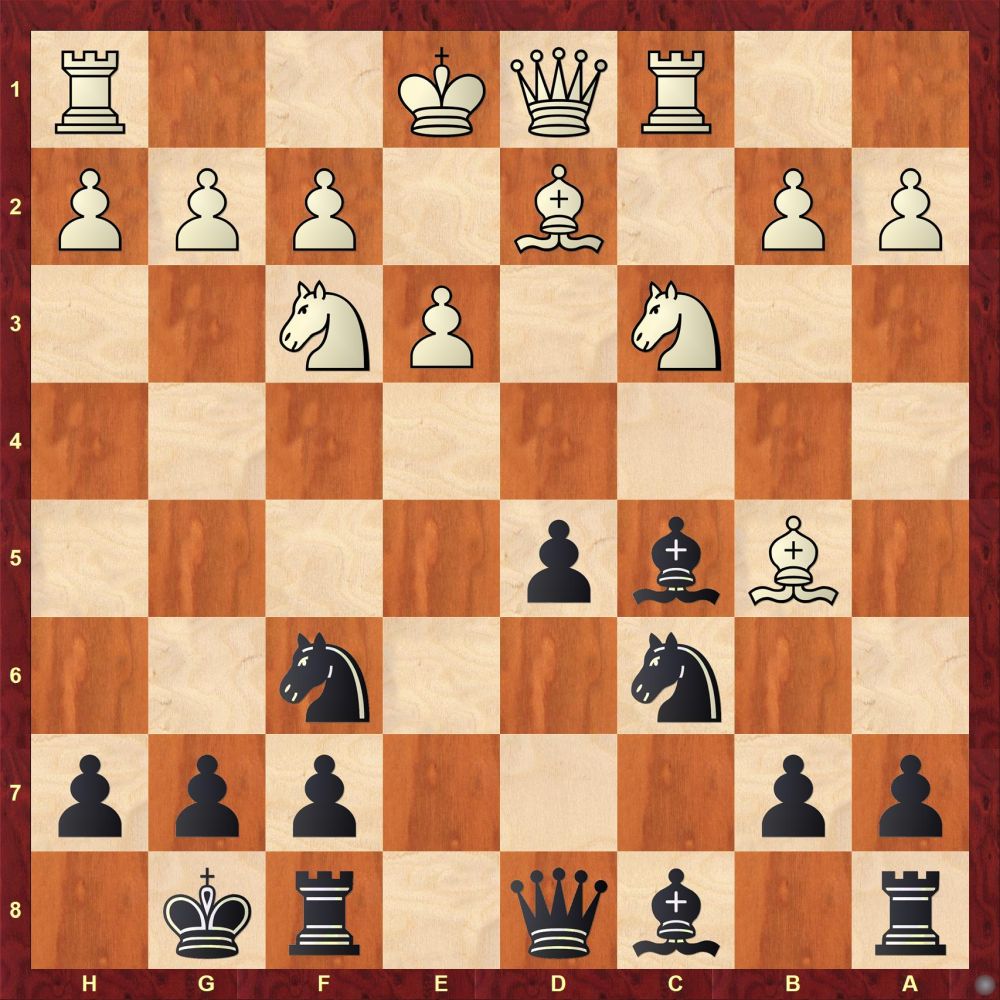
Black wants to play 10...d4, but White has the intermediate move 11.♗xc6. Try to decide, as Black, if it is correct to play the pawn push d5-d4 or not. You could put this position on a real board, and give it at least 10-15 minutes, to simulate tournament conditions.
For those who are curious, but don't want to do the calculation exercise, here is the entire game:
The video series has a huge number of interactive training exercises in which Ris presents a position, explains it a little, and then challenges us to find the best move. This image shows a position that left me satisfied, as I immediately found the correct move:
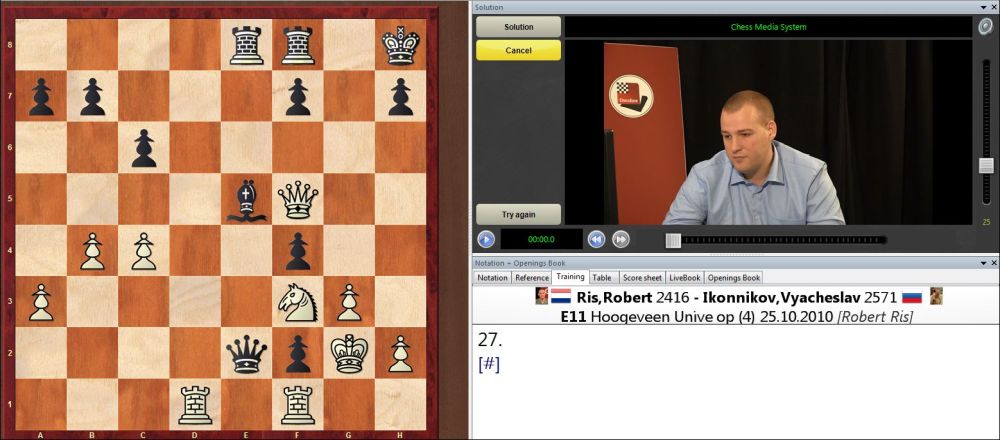
And then you can try to play as White and win:
White to play and win
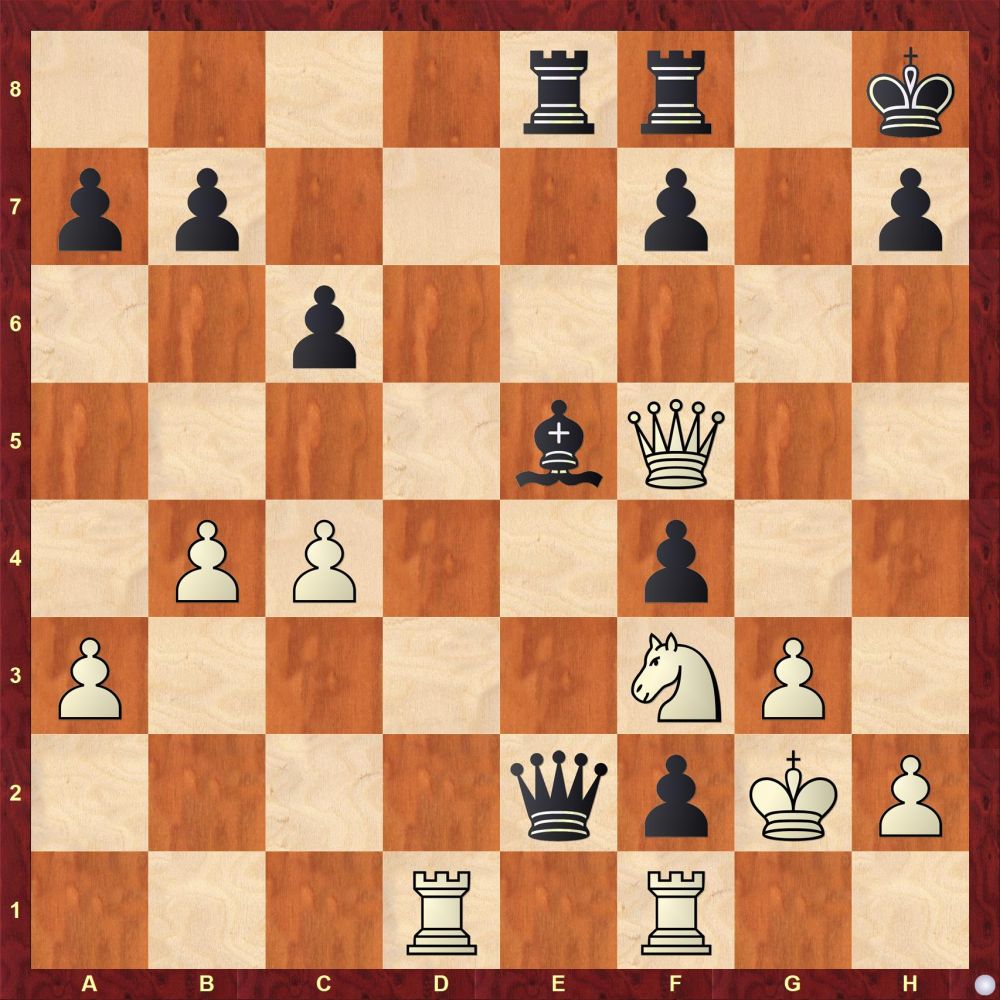
If you just want to see the game, you might be disappointed, because Ris missed the right move that would have allowed him to win the game. But this is also a cautionary tale. At the board, each move can always be the last one, and if we miss our moment we will not get another chance!
While doing many of these interactive positions, I found myself asking why I was working on these exercises. These are not positions taken from Kasparov's or Karpov's play when they were at their top — But these are positions we can actually find in practical games and that is indeed very useful for the tournament player.
Another point I want to make is related to the latest mantra, "Solve studies and it will make you a stronger player". I'm not denying solving studies can make someone stronger, but I believe chess must be interesting and exciting. The positions selected by Ris have this quality. Instead, I believe studies could become boring and consequently kill the interest in the game, without mentioning the fact that often some players believe in immediate returns from doing a certain activity, while it could take a few years of solving studies to become stronger.
I'd like to mention one thing which made me laugh. The interactive test number 11 is a game from Mamedyarov v. Giri. Ris, while explaining the position, said: "Surprisingly the game ended in a draw..." Giri became famous when in 2016 he drew all his fourteen games at the Candidates Tournament!
I found the cover of a possible book for Giri: "60 memorable draws". Surely this game could be included!
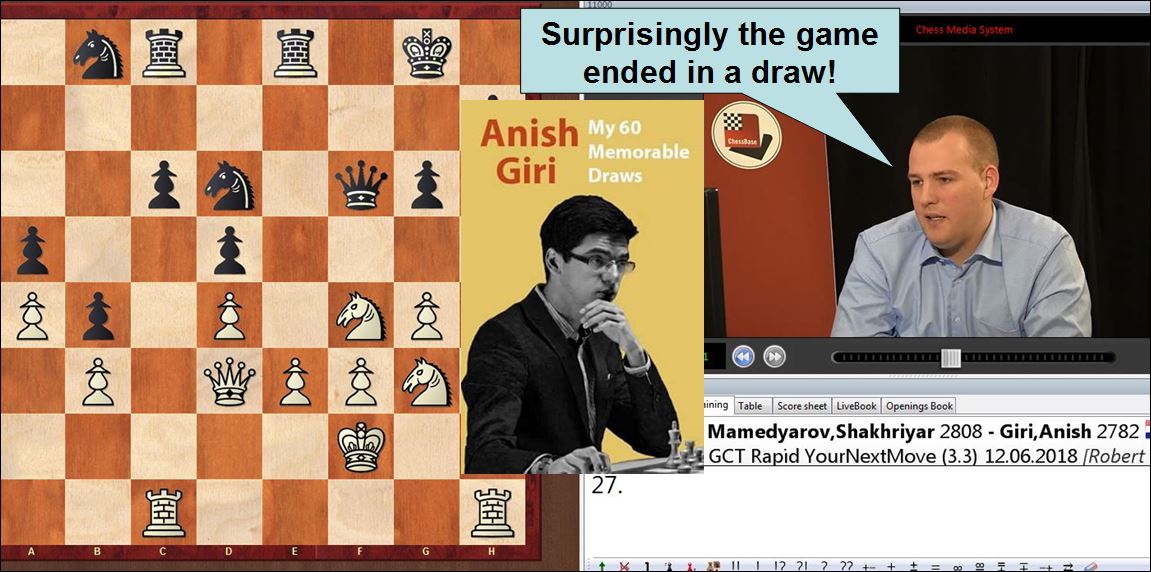
Returning to the topic, the reason Ris was surprised is that White could have won the game. But this game was a rapid game, and White maybe didn't have enough time to calculate deeply. I'm showing this position to support the advocates of long time control games.
Can you find the winning idea? How to start the attack?
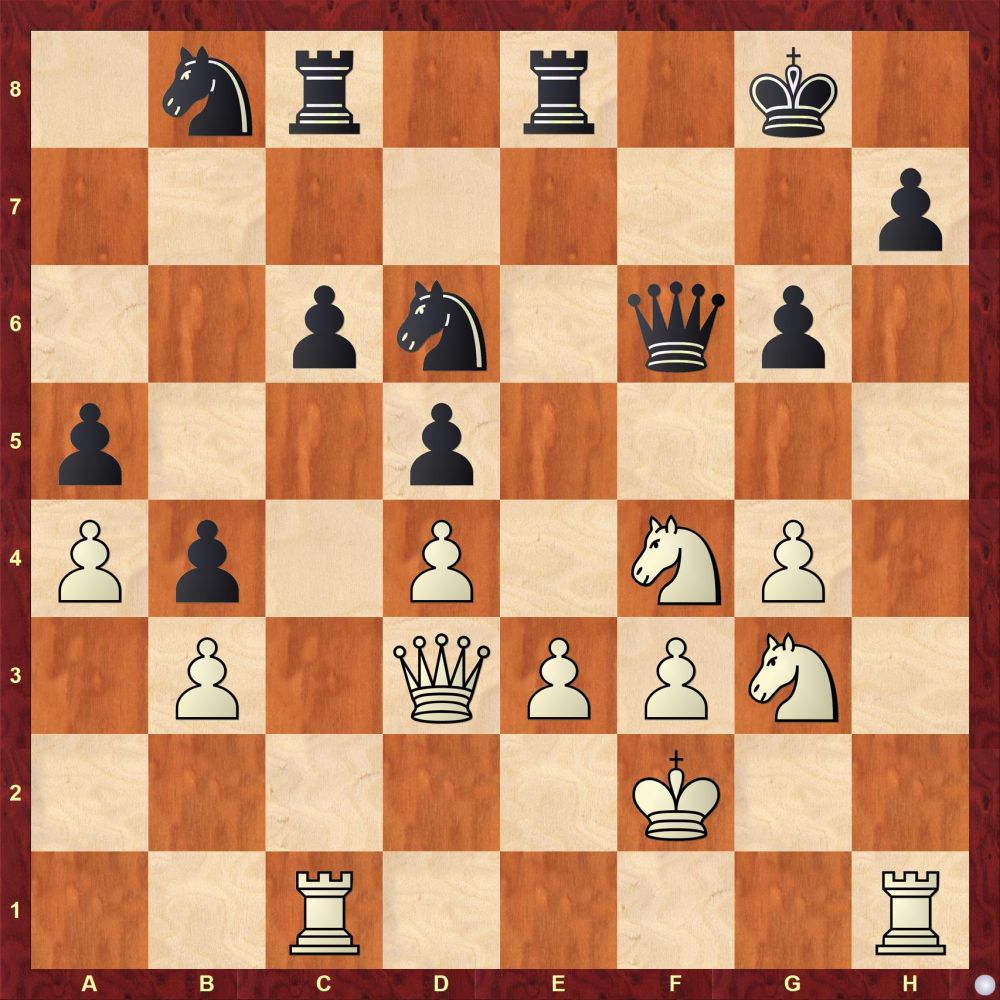
This is the position. See if you can calculate all the moves of the winning attack on the kingside, and mark down the time employed to calculate. The critical move one should see is three moves ahead. And this is the proof we need longer time controls also in top games — otherwise, not even they will have the time to spot the correct combination and confirm it through analysis.
I found quite interesting the following position from the interactive exercises. In this case, Ris took as an example game that between Matlakov and Smirin (the latter is famous for a book on the King's Indian Defence).
I must admit I was a little annoyed by this position, because GM Matlakov is rated around 2700, and if he cannot find the right move, how could someone with 600 rating points less find it? But in order to improve one must go beyond one's own comfort zone, so I threw myself into the position and began to think upon the strength of the pieces, how to attack the kingside, etc.
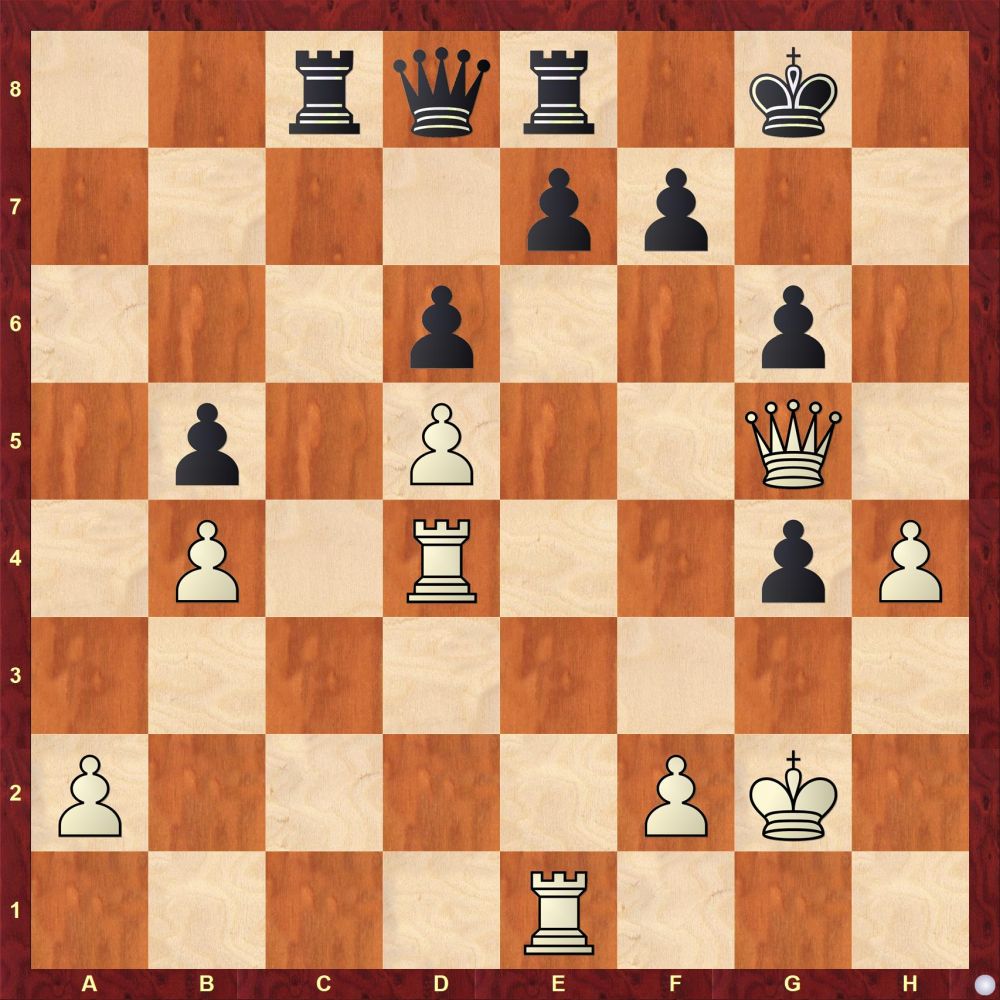
In the position shown, Ris asks to find how to continue the attack. I thought I wanted to play Ph5, but I cannot do it because if Black plays Pe7-e5 the Qd8 comes into play.
And this is the reason why I'm mentioning this position: after 10-15 seconds watching the position, and going back and forth... I realized my problem was Black's chance of playing e7-e5. what if I could stop it? And immediately the move Re6!! came to mind.
I played it, and Ris came back in a video saying congratulations because I had found the right move. However, Ris didn't come back only to congratulate me — he began to show a lot of lines I didn't calculate. And that made me understand that my intuition must be supported by calculation in order to be correct.
While doing the 50 interactive test positions, I realised Ris based his feedback on the main move chosen by his students! Yes, we are solving positions Ris also gave to his students. This was quite valuable, because Ris also admitted some answers were typical of his students, and he went on to refute the solutions. This shows how strangely the thought process of similar rated players tends to lead them to a similar approach while finding candidate moves in a certain position.
Summary
This video series encompasses the best of two ways to learn: the theoretical framework needed to better understand a position and the way to think about it, and the practical aspect. In the workbook, one needs to be able to see if one can apply what was learned in the theoretical section.
A book can be impersonal, and often it is difficult to understand what the author means, because through reading only a part of the information is conveyed. Instead. while listening to Ris I could get an insight into the mind of a titled player, and gain a role model into what I should think during the game. Ris really gives a lot of feedback in the interactive training — it is like having a coach in front of us, who explains why some moves we chose were not correct. This thoroughness is what we need since we are human beings, and our understanding is enhanced through verbal explanations.
Ris also combines well positions from his games and positions coming from other sources — from top tournaments, with players like Anand or Caruana, as well as positions presented by other ChessBase authors, like Daniel King or Oliver Reeh, which caught his interest.
Final thoughts
Why do we need to do this calculation training? Because often we meet the same opponents over and over. In order to significantly beat them and reach the next level, we need to get rid of the flaws in our game. These flaws may have been noticed by our opponents and not revealed to us. While openings are of extreme importance, another factor which will influence our games is calculation.
As mentioned above, I noticed that titled players — even GMs or IMs — calculate 4-5 moves ahead, but it's not only how far they can see, but how precise they are in visualising and structuring those lines inside their minds. This didn't happen magically, it happened with a lot of training, similar to the training proposed in this DVD. We can find exercises everywhere, but to have an IM explaining them to us and giving us feedback is quite valuable.
If I may add a suggestion, I would advice you to try doing the theoretical part over a week, when you have time, and then choose a weekend to study and solve all the 50 positions. This intensive training will be quite valuable. Then, after a month or two, try again to solve all the positions over a weekend. This way, you will be able to gauge how much was learned, and how much was lost. If we remember easily all the 50 positions, then this is a major victory, since it would become a permanent improvement on our chess understanding.
Robert Ris has another product which is meant as an introduction to becoming a strong calculator. It's called just the Calculation Training (No "Extreme" here!)

